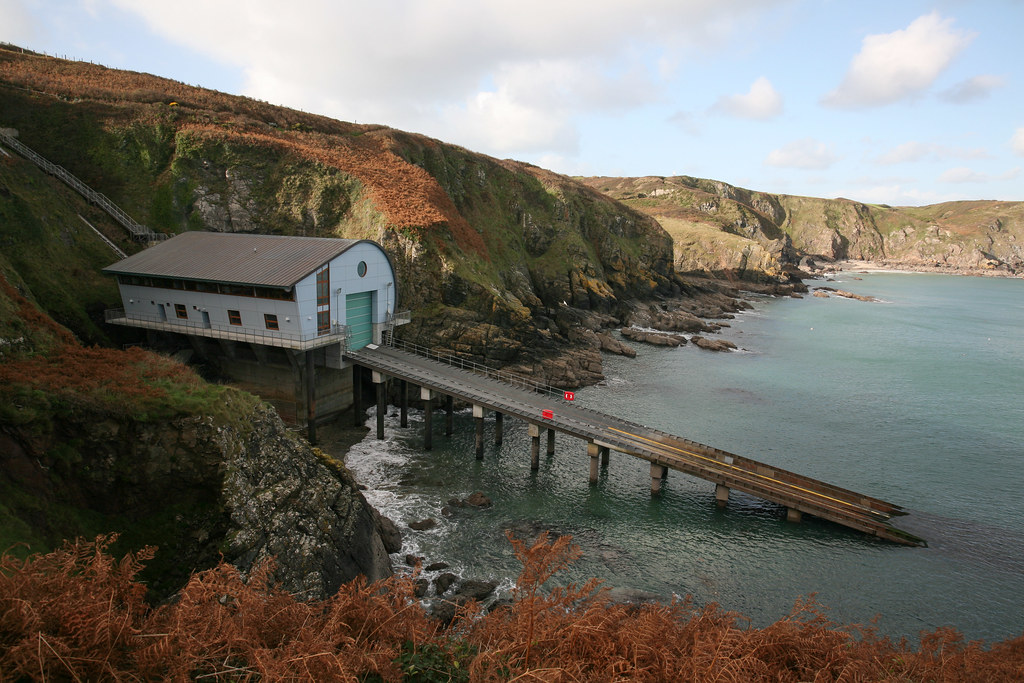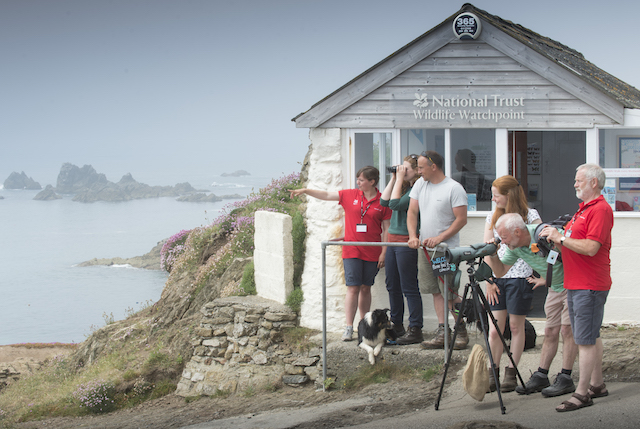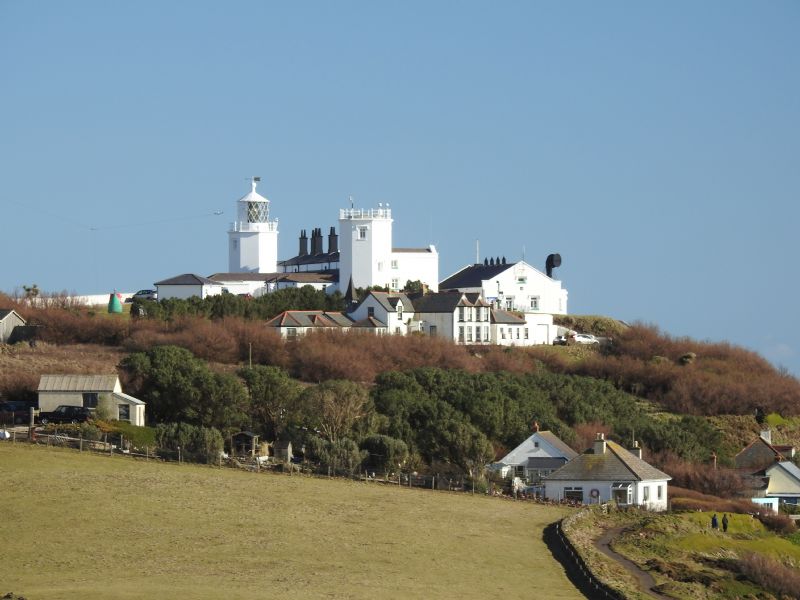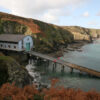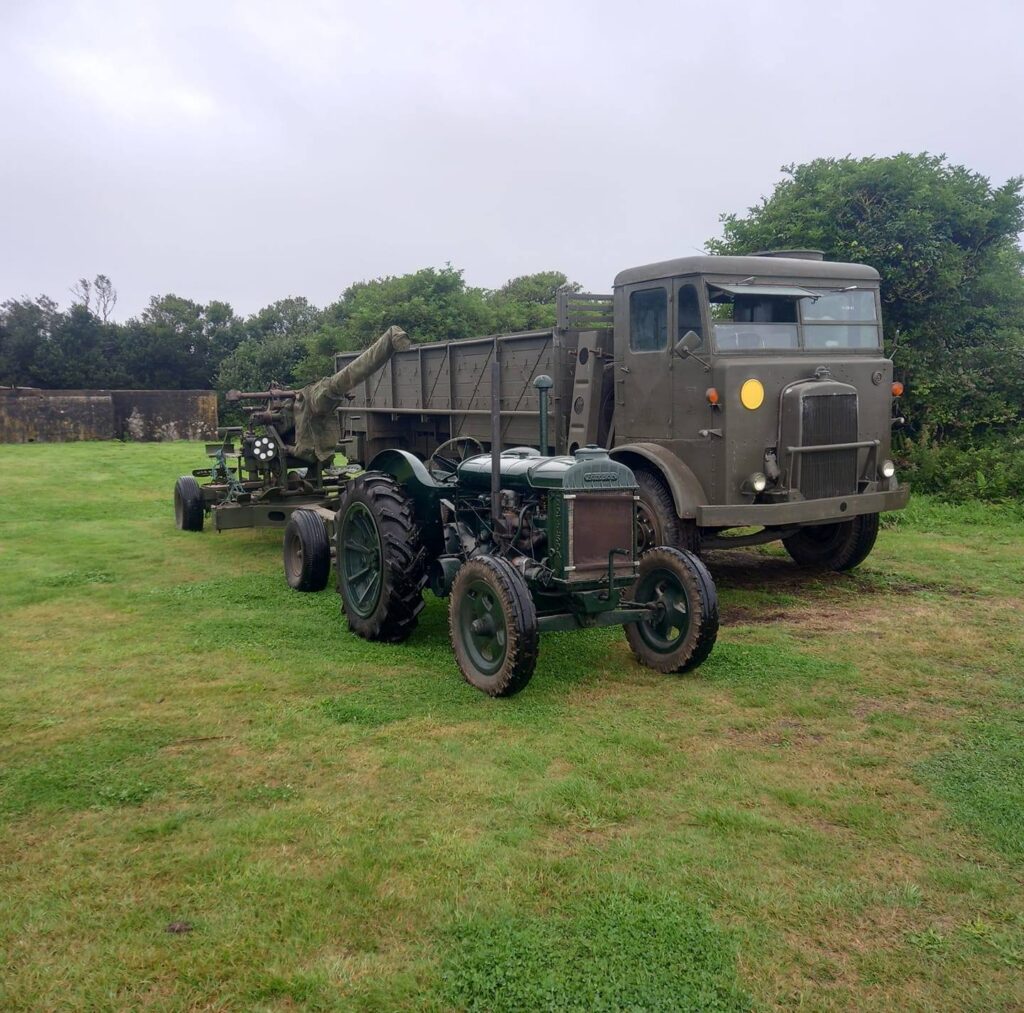
Predannack Anti-Aircraft Battery and Museum
In late 1940 and early 1941, the government initiated a national project to protect vulnerable areas, including cities and airfields. Each of these Gun Defended Areas possessed a surrounding ring of two or more light or heavy antiaircraft batteries, and were manned by men and women from the Territorial Army, Royal Artillery and Auxiliary Territorial Service.
By 1945, more than 1,000 light and heavy Home Defence anti-aircraft batteries had been positioned across the British Isles. One such site was at RAF Predannack, a key airfield near Mullion in Cornwall. Due to its southerly location, the airfield was deemed vitally important and thus became a Gun Defended Area with two 1941-pattern heavy anti-aircraft batteries deployed in its immediate vicinity.
Each battery had four gun pits, each holding a 3.7-inch AA gun. Both sites also contained a command bunker, guard room, maintenance store, and ammunition bunker. At Predannack, each of the batteries was supplemented by a contingent of Bofors guns and searchlights. Although Predannack’s war was quiet, a number of raids on the airfield meant the batteries saw action more than once. In 1941, Luftwaffe fighters strafed the airfield in a surprise night attack. It was eventually beaten off by defensive fire from the guns.
By 1946, multiple airfields across Britain had been mothballed – RAF Predannack included. This, combined with the increasing obsolescence of heavy anti-aircraft guns given the development of jet aircraft, meant that the base’s batteries were surplus to requirement. Like most defensive sites, Predannack’s gun pits were not considered worth saving as they had no financial viability nor, at the time, apparent cultural or historic value. The few batteries across the country that weren’t demolished were soon forgotten and fell into neglect.
However, at the turn of the century, Historic England endeavoured to document all surviving defensive sites across the UK. As of 2010, of the original 1,000 AA sites, only 200 heavy anti-aircraft battery locations had been documented. Of this collection, just 60 were deemed to be in a reasonable condition good enough to demonstrate their original use to the public. And of this number, the surviving battery at Predannack was deemed the best preserved.
Founder of Predannack Anti-Aircraft Battery and Museum, Ian Henn, explained: “I live in the Lizard Peninsula, and have always been aware of the historical importance of Predannack and its batteries. In retirement, a friend and I took it upon ourselves to tidy up the site as a part-time hobby.”
Thirteen years on and the Predannack Anti-Aircraft Battery site has undergone a monumental restoration. Through the tireless work of Ian, pal Tony and their team of 12 dedicated volunteers, much of the foliage that once covered the site has been removed. Surviving original buildings have undergone repairs to bring them back to a condition they would have been in wartime.
As of 2023, the Predannack Battery is registered as a museum of national importance. Ian and his team have undertaken a programme of conservation, obtaining numerous items relating to the battery’s wartime use. “It’s taken 13 years to get to this stage, and we’re still a long way off,” Ian told Britain at War. “We are working towards making this site authentic and as interesting to the public as can be, especially through the acquisition of vital objects.”
Location
Contact Information
Ruan Minor
Cornwall
TR127LH


